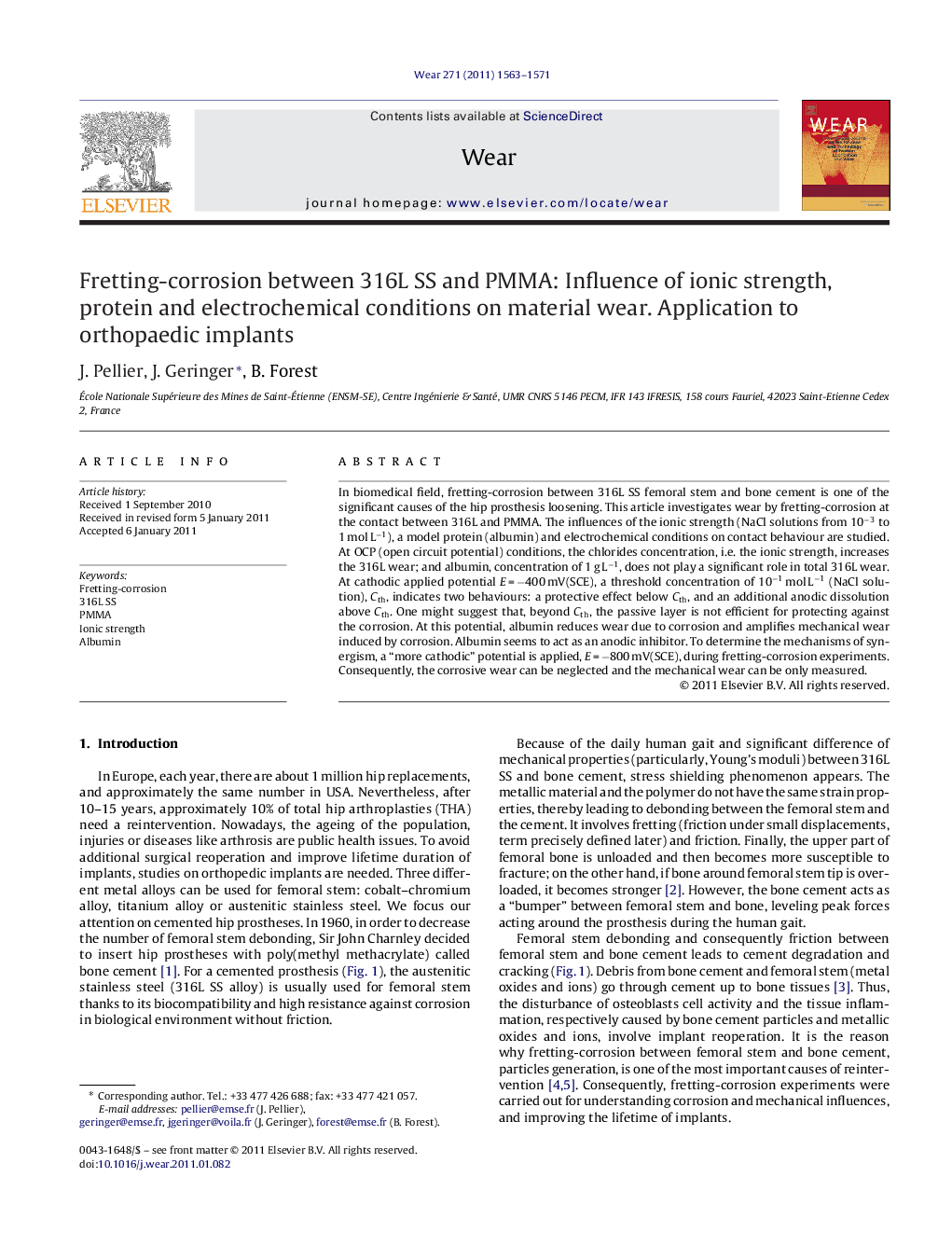| کد مقاله | کد نشریه | سال انتشار | مقاله انگلیسی | نسخه تمام متن |
|---|---|---|---|---|
| 618193 | 1455019 | 2011 | 9 صفحه PDF | دانلود رایگان |

In biomedical field, fretting-corrosion between 316L SS femoral stem and bone cement is one of the significant causes of the hip prosthesis loosening. This article investigates wear by fretting-corrosion at the contact between 316L and PMMA. The influences of the ionic strength (NaCl solutions from 10−3 to 1 mol L−1), a model protein (albumin) and electrochemical conditions on contact behaviour are studied. At OCP (open circuit potential) conditions, the chlorides concentration, i.e. the ionic strength, increases the 316L wear; and albumin, concentration of 1 g L−1, does not play a significant role in total 316L wear. At cathodic applied potential E = −400 mV(SCE), a threshold concentration of 10−1 mol L−1 (NaCl solution), Cth, indicates two behaviours: a protective effect below Cth, and an additional anodic dissolution above Cth. One might suggest that, beyond Cth, the passive layer is not efficient for protecting against the corrosion. At this potential, albumin reduces wear due to corrosion and amplifies mechanical wear induced by corrosion. Albumin seems to act as an anodic inhibitor. To determine the mechanisms of synergism, a “more cathodic” potential is applied, E = −800 mV(SCE), during fretting-corrosion experiments. Consequently, the corrosive wear can be neglected and the mechanical wear can be only measured.
► Fretting-corrosion of 316L against PMMA (model material for bone cement or bone).
► Study of the albumin effect on mechanical and corrosive wear.
► The ionic strength increases the wear.
► Albumin promotes the mechanical wear at applied potential.
Journal: Wear - Volume 271, Issues 9–10, 29 July 2011, Pages 1563–1571